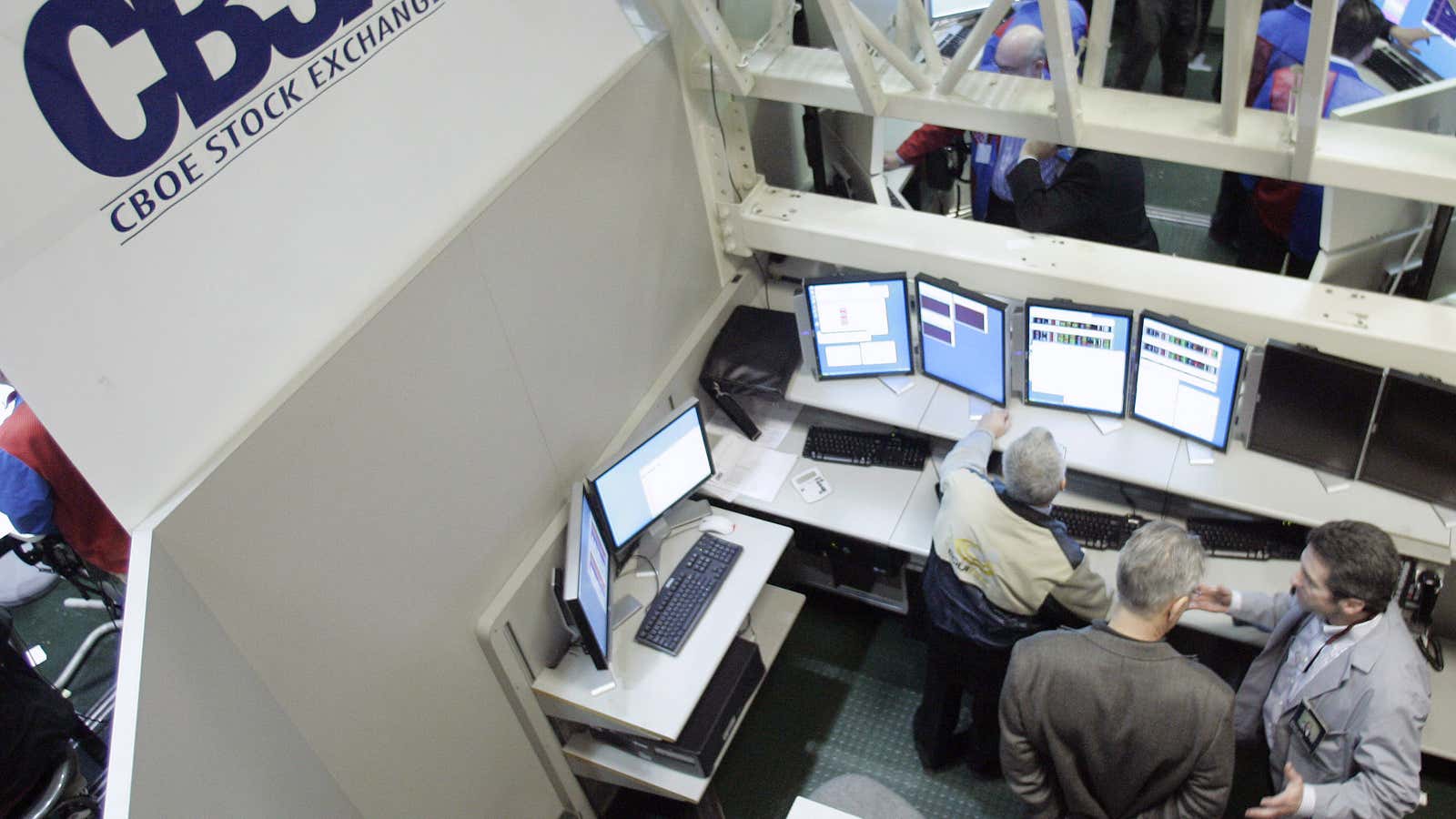A malfunction in its trading system forced CBOE Holdings to briefly shut down two of its exchanges today. This news comes just a day after representatives of exchanges across the country met with regulators in Washington, DC (paywall), to discuss a glitch in August that caused Nasdaq to shut down for three hours. Ominously, the problem CBOE’s stock exchange encountered appears strikingly similar to the one that caused Nasdaq to go offline, suggesting that there are ongoing and serious problems with the way trades are processed on most exchanges.
A little refresher on how exchanges work: All stocks in the US are listed on either the New York Stock Exchange (NYSE) or Nasdaq, but there are 13 different exchanges (too many, some argue) that process trades for these stocks. In order to make sure that bidders for a stock get the best possible price, the NYSE and Nasdaq each have a Securities Information Processor (SIP), a system that collates quotes for the stock from all the exchanges and publishes a running “national best bid and offer price” (NBBO) at which trades for that stock can be executed.
The problems arise when the communication between exchanges and the SIPs breaks down. In Nasdaq’s three-hour-long “flash freeze” last month, an exchange operated by the NYSE lost touch with Nasdaq’s SIP, and a glitch in Nasdaq’s software exacerbated the issue.
According to reports released so far, “dissemination issues” were at the heart of what caused today’s shut-down at the CBOE Stock Exchange, suggesting that the exchange had difficulty communicating with an SIP. Eric Hunsader of Nanex LLC—who analyzes real-time data for trades—points out that the CBOE stopped publishing quotes to the SIP. And although no stock market shut down completely today, Hunsader shows that the CBOE’s issues still disrupted trading in hundreds of stocks.
The cause of today’s glitch isn’t yet known. But the technology around SIPs is horribly out of date. “Even when the SIPs are working as they should, they’re extremely slow, and that puts all those who use them at a competitive disadvantage,” Manoj Narang, the CEO of high-frequency trading firm Tradeworx, told the Washington Post. The sheer volume of data that needs to be processed by these SIPs is overwhelming, and makes the whole quote-generating system vulnerable.
And although the financial industry spends tens of millions to keep the software on these exchanges up to date, it has little incentive to improve their performance. High-frequency trading firms and banks don’t use the SIPs because they prefer to pay for data feeds directly from the exchanges and aggregate trading data on their own.
Unfortunately, this means breakdowns, with occasionally devastating effects. True, today’s problems were minimal and brief. The two exchanges affected—the so-called C2 electronic options exchange (which works differently) and the CBOE Stock Exchange—are both small and handle only small percentages of all the trades in the options and stock markets. But the repeated hiccups underline the fact the problems with the way exchanges communicate are systemic.
